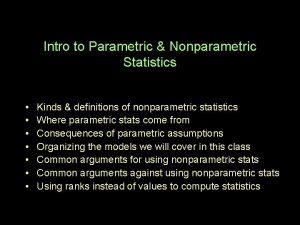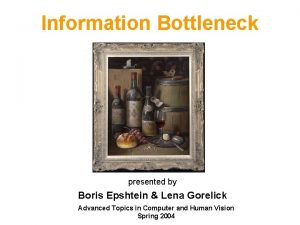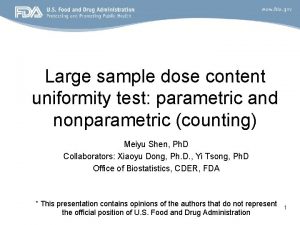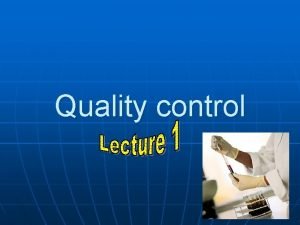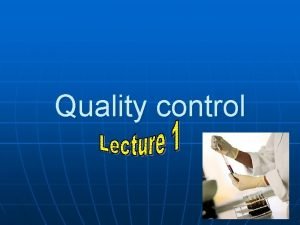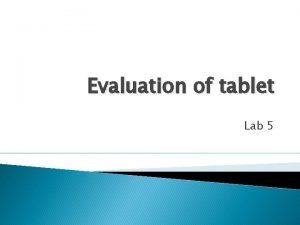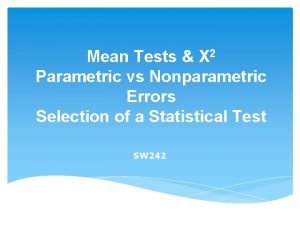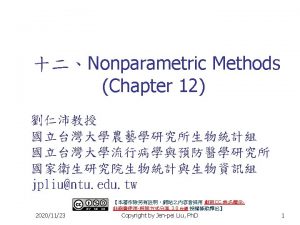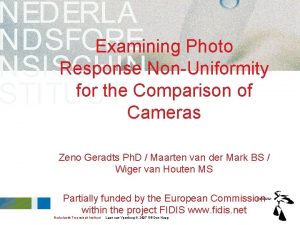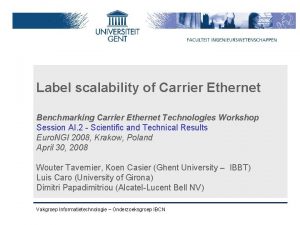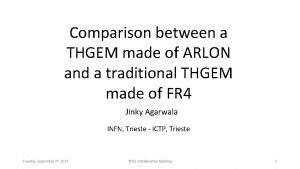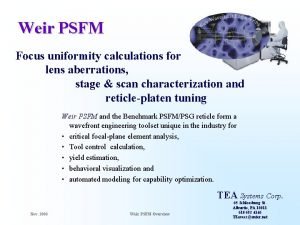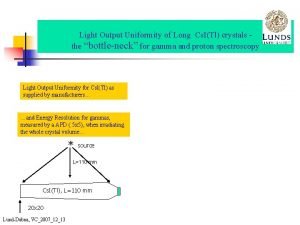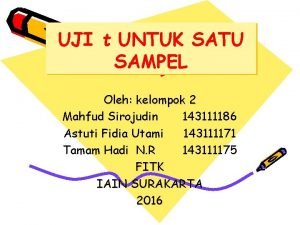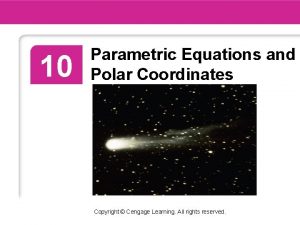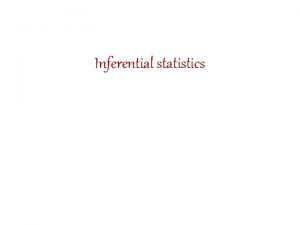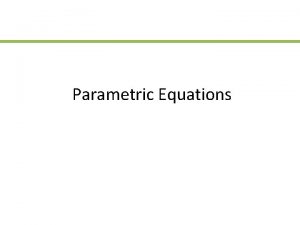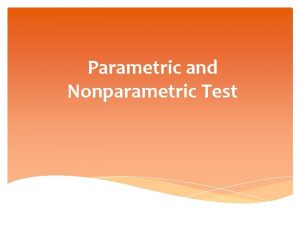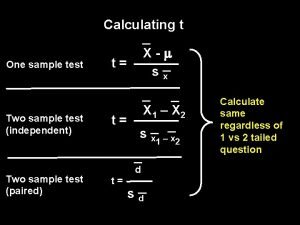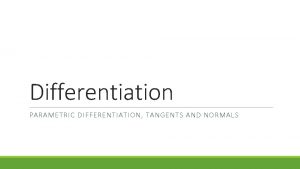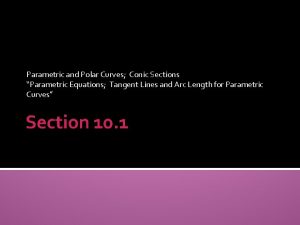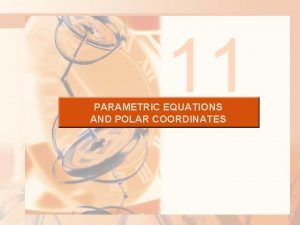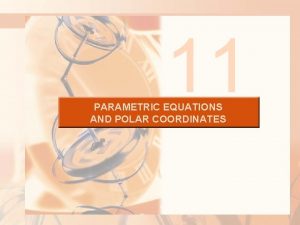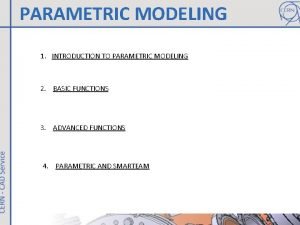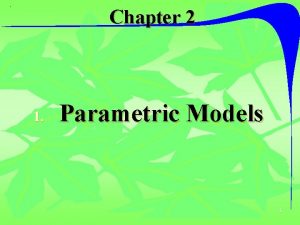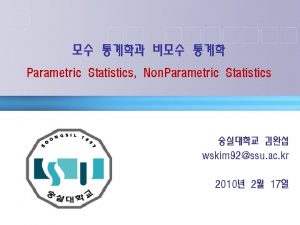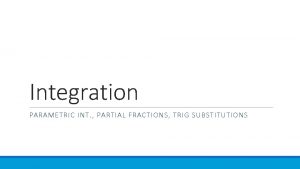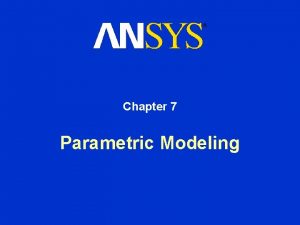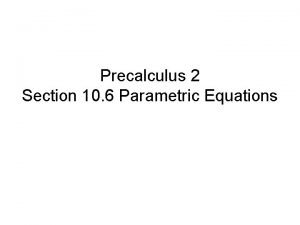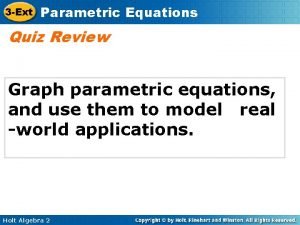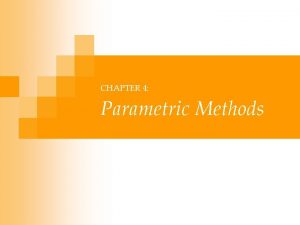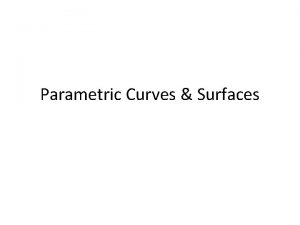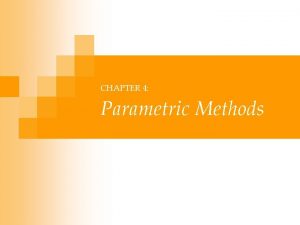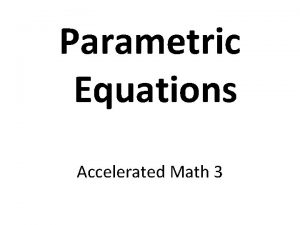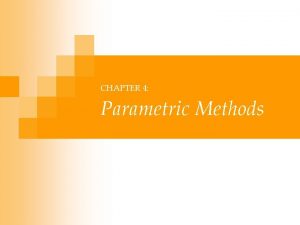Large sample dose content uniformity test parametric and
























- Slides: 24

Large sample dose content uniformity test: parametric and nonparametric (counting) Meiyu Shen, Ph. D Collaborators: Xiaoyu Dong, Ph. D. , Yi Tsong, Ph. D Office of Biostatistics, CDER, FDA * This presentation contains opinions of the authors that do not represent the official position of U. S. Food and Drug Administration 1

Outline • Purpose of uniformity of dosage unit • Harmonized USP dose content uniformity test with a small sample • Large n dose content uniformity test – EU methods • Option 1: Parametric method • Option 2: Nonparametric method (Counting method) – Two one-sided tolerance interval method • Comparison between the EU method and the two one-sided tolerance interval method • Conclusion 2

Uniformity of dosage unit • The purpose of uniformity of dosage unit – The degree of uniformity in the amount of the drug substance among dosage units. • Demonstrated by one of the follows – Dose content uniformity (focus here) • based on the assay of the individual content of drug substance(s) in a number of dosage units – Weight variation 3

Indifferent zone • M: • 4

Harmonized USP DCU for small n Step 1, 10 tablets Step 2, additional 20 tablets Yes Pass No Fail Yes Pass 5

EU option 1 for large n≥ 100 Take n tablets, {Xi}, i=1, 2, …, n No Fail Yes Pass 6

EU option 2 for large n≥ 100 Take n tablets, {Xi}, i=1, 2, …, n No Fail Yes Pass 7

EU Option 2 acceptable number of individual units c 1 outside (1± 0. 15) and c 2 outsides (1± 0. 25) n c 1 c 2 100 3 0 123 3 0 150 3 0 176 5 1 196 6 1 …. … … 8

PTIT_match. USP 90 Take n tablets, {Xi}, i=1, 2, …, n No Fail Yes Pass 9

EU option 1 and PTIT_match. USP 90 EU Option 1 PTIT_match. USP 90 • Two-sided tolerance interval • Two one-sided tolerance interval – Control probability within (85, 115)% • Two-sided hypothesis P – Control probability each tail outside (85, 115)% • Two one-sided hypothesis (1 -P)/2 10

EU option 1 and PTIT_match. USP 90 EU Option 1 • Formula for K PTIT_match. USP 90 • Formula for K – – – Confidence level: – Center Coverage: – Confidence level: 1 -α=0. 95 – Each tail probability: (1 -p(n))/2 – For n=30, p=82. 04%, 11

K values of EU Option 1 and PTIT_match. USP 90 Sample size PTIT_match. USP 90 EU Option 1 100 2. 0475 2. 15 1000 2. 2321 2. 27 12

Normal: on target product, mean=100% 13

Normal: off target product, mean=102% 14

Mixed normal: on target overall mean 15

Mixed normal: off target overall mean 16

Bias of EU Option 1 17

Special distribution • Assume the individual tablet dose content is distributed as a uniform distribution in the range from 85% to 115% with 97% probability and a value 84% with 3% probability. – The probability of passing USP harmonized DCU is 3. 72% for a sample size of 30 tablets. – Comparison of EU Option 2 and PTIT_match. USP 90 in next table • EU Option 2 has 45. 5% probability to pass the DCU test when n=300. • the PTIT_macth. USP 90 has zero passing probability for n≥ 100. 18

EU Option 2 and PTIT_match. USP 90 Xi: a uniform distribution in the range from 85% to 115% with 97% probability and a value 84% with 3% probability Sample size, n 100 150 200 300 500 1000 Acceptance probability EU option 2 PTIT_USPmatch 90 0. 6458 0 0. 5276 0 0. 6047 0 0. 455 0 0. 3509 0 0. 2075 0 19

EU Option 2 and PTIT_match. USP 90 for 2 special cases Case Sample size, n Passing probability EU Option 2 PTIT_match. USP 90 Xi is 100 with 97% probability, and 50 with 3% probability. Xi is 90 with 97% probability, and 50 with 3% probability. 100 150 0. 641 0. 523 0. 196 0. 172 100 150 0. 648 0. 530 0. 045 0. 012 20

Conclusion • A large difference in acceptance probability between EU option 1 and PTIT_match. USP 90 when the batch mean is off -target. – Larger passing probability for EU Option 1 than PTIT_match. USP 90 • No much difference in acceptance probability between EU option 1 and PTIT_match. USP 90 when the batch mean is on -target. • Bias of EU Option 1 – EU Option 1 has higher probability of passing the off-target product than that of passing the on-target mean product for a given coverage within (85%, 115%) 21

Conclusion (continued) • EU Option 2 – Issue with a large variability for a mixture of 97% probability of distributing uniformly with (85%, 115%) and 3% probability of being 84%) using a sample of 200 • 60% probability to pass EU Option 2 • 0% probability to pass PTIT_match. USP 90 • 3% probability to pass USP harmonized – Issue with a location shift of the mean product • The same probability to pass the EU Option 2 for 97% population with 100% content and 97% population with 90% content. • Off target product: 97% population with 90% content using a sample of 150. – >50% probability to pass the EU Option 2 – About 1% probability to pass PTIT_match. USP 90 22

References • • USP Pharmacopoeia 2015 European Pharmacopoeia 7. 7 European Pharmacopoeia 8. 1 Meiyu Shen, Yi Tsong, Xiaoyu Dong, Statistical Properties of Large Sample Tests for Dose Content Uniformity, Therapeutic Innovation & Regulatory Science, 2014, Vol. 48(5) 613 -622 • Meiyu Shen and Yi Tsong, Bias Of The United States Pharmacopeia Harmonized Test For Dose Content Uniformity, United States Pharmacopeia forum, January 2011 23

Thank you! 24
 Univariate statistical tests
Univariate statistical tests Parametric test and non parametric test
Parametric test and non parametric test Parametric vs non parametric test
Parametric vs non parametric test Parametric and non parametric algorithms
Parametric and non parametric algorithms Content uniformity test
Content uniformity test Content uniformity test for parenterals
Content uniformity test for parenterals Content uniformity definition
Content uniformity definition Content uniformity test for tablets
Content uniformity test for tablets Tablets quality control tests
Tablets quality control tests Tablet evaluation
Tablet evaluation Parametric vs nonparametric test
Parametric vs nonparametric test Mann whitney u test advantages and disadvantages
Mann whitney u test advantages and disadvantages Isolux diagram for finding luminance on road surface is a
Isolux diagram for finding luminance on road surface is a Photo response non uniformity
Photo response non uniformity Inspect uniformity of skin color rationale
Inspect uniformity of skin color rationale Uniformity
Uniformity Permaglass me 730
Permaglass me 730 Wafer uniformity formula
Wafer uniformity formula Esrlight
Esrlight Real content and carrier content in esp
Real content and carrier content in esp Tabel taraf signifikansi
Tabel taraf signifikansi Static content vs dynamic content
Static content vs dynamic content Parametric equations and polar coordinates
Parametric equations and polar coordinates Explain the types of statistics
Explain the types of statistics Chapter 7 conic sections and parametric equations
Chapter 7 conic sections and parametric equations


